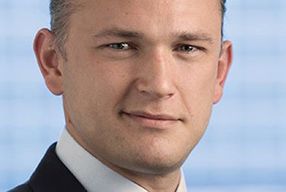
Fund selection plays a crucial role in portfolio construction. Once the asset allocation decision has been made, these individuals need to decide how they want to be exposed, be it through a mutual fund, investment trust or ETF.
Over the years, ETFs have become an increasingly important part of any investors’ toolkit. This series will show how the key players across the fund selection space use ETFs in their portfolios while asking what more can be done by the ETF providers to help with this increasing adoption.
Next in the hot seat is James Penny, senior investment manager at TAM Asset Management. Penny joined TAM as an investment analyst in 2014 having started his career at UBS Investment Bank in 2010 where he held a variety of roles.
How much of your portfolio is made-up of ETFs/index funds?
Between 7.5-20% of the strategy is made up of ETF’s depending on which one of TAM’s investment products is being reviewed.
When did you start investing in ETFs?
We have been investing in ETFs for a number of years in various guises for various bespoke client strategies.
TAM began, in earnest, to include ETFs in its mainstream active portfolios in the last couple of years. This move was borne out of a desire to really add another dimension to our active investment capabilities when it comes to distilling specific investment exposure, risk and/or alpha in the portfolio.
For us, the assumption that using an ETF denotes a passive approach to investing is certainly not true.
Which asset classes do you tend to invest in through ETFs?
The outcome we are trying to achieve in our tactical or strategic view will dictate how we use an ETF.
Primarily markets where it does not pay to go active such as UK Gilts are interesting areas, as is the S&P 500 where, historically, it has been very hard to outperform with an active strategy.
Under this observation TAM would say “if you can’t beat them join them” after all, in a world where asset managers margins are being squeezed, why pay circa 0.80% AMC for active risk in a very efficient market when you can pay 0.10% to own the sector.
Save that AMC for an area of the market where it really does pay to go active such as small caps, frontier markets, emerging markets and emerging market debt.
Likewise, ETFs work in the thematic space as well. Given the depth and breadth of the ETF industry you can always find a specific ETF which gives you exposure to exactly what you want, be it a sector or theme like the “smart beta” family of products.
The active element of the offering we provide clients is the decision to introduce our clients to a specific theme or sector.
The investment vehicle used to play that theme is more dictated by the mechanics of that particular market rather than exclusively focussing on sourcing an active fund whatever the cost.
Which areas would you avoid?
I would avoid passives in any market which is deep enough to display significant pricing inefficiencies for active management to thrive.
Also to be avoided are passives in markets with an increased risk of owning companies involved in fraudulent or illegal behaviour which an ETF investor has no choice but to have exposure to.
Usually, these markets are frontier in nature and display significant pricing discrepancies for an active manager to really take advantage.
What is your methodology for selecting ETFs?
We try to ensure diversification is key at TAM and that goes for our ETF book as well as our active book.
Having a broad range of providers helps us to diversify-out house risk as well as source different variants on a sector or market
Do you have an ETF provider preference?
No. They all come in different shapes and sizes with no one house having a monopoly on quality products.
The next battle ground in passives will be the house that manages to consistently release a raft of 0% AMC products that are UCITS compliant.
What ETF products would you like to see more of?
Areas of capital markets where ETFs haven’t featured grows smaller every day but let’s see more esoteric and exotic ideas…surprise me!
Areas ETF providers could improve?
That’s a good question. The simplicity of mainstream ETF’s leaves little to the imagination but providers could do more to breakdown the assumption that using ETF’s makes a portfolio a passive one.
Also, ETFs have a huge opportunity to shape activist investing, (broadly speaking) with trillions of dollars in shares being owned by passive ETF’s in mainstream markets there is an opportunity for passive funds to begin to use these holdings to vote at company AGMs on behalf of their passive investors’ wishes.
Link to original article
Seven wealth managers' top passive plays
Tech Roundtable - The lessons of dotcom 20 years on
